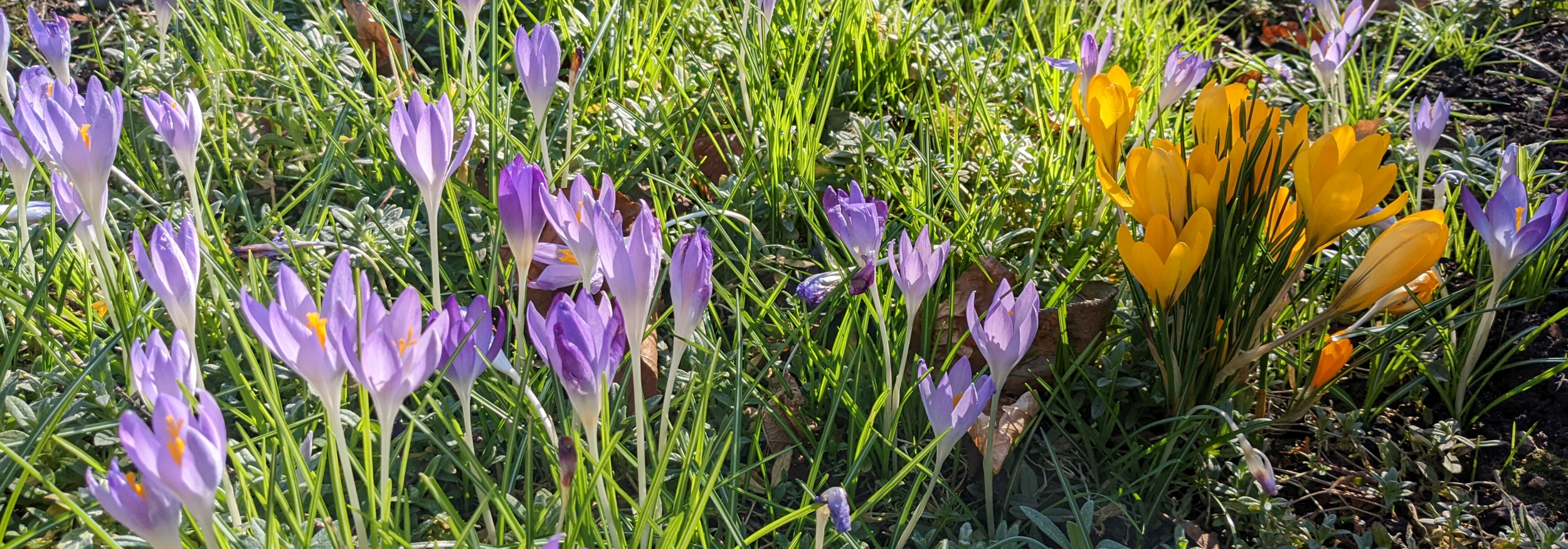Spring Jewels
/Eranthis hyemalis
During these early months of the year, I seem to spend a lot of time looking down, not only to protect my face from the elements, but to see what is poking up through the ground. It’s always a joy to spot the first of the tiny jewel like flowers that pop up, despite inclement weather and short days. A large patch of winter aconites (Eranthis hyemalis) was here when we moved in, and over the years they have seeded freely throughout the gravel drive as well as being manually transported to other areas. These are the common variety, introduced to the UK in 1596 from Europe and now naturalised in many areas. There are a number of cultivated varieties, such as the cultivar E. hyemalis 'Guinea Gold’ with larger flowers and bronze tinged leaves, as well as the double flowered E. hyemalis 'Flora Plena’ and, if you wanted something different, there are a couple of white flowered species, E. albiflora and my favourite, E. stellata. I am content with my carpet of yellow. For now, at least…
Galanthus elwesii ‘Godfrey Owen’ - note edge of pot!
Alongside the aconites are clumps of snowdrops, mostly just showing their buds at present, although one early flowerer, Galanthus elwesii ‘Godfrey Owen’ is fully out, and satisfyingly, starting to multiply. My small selection of snowdrop species wouldn’t make a serious galanthophile leave the comfort of their armchair, though I live in hope of finding something unusual one day, and the collection is growing. My newest purchase is G. plicatus ‘Augustus’ with fat glossy green leaves and wonderfully quilted and rounded outer petals. If you do buy an expensive bulb or something you don’t want to lose amongst the other species, try planting the pot (assuming you have purchased them/it ‘in the green’) direct in the ground.
Finally, the tiny flowers of Cyclamen coum are peeking through their leaf canopy. These have roundish, and often marvellously patterned leaves which appear in October, followed by delicate pink, white or bicoloured flowers in late winter, and if happy, will seed freely, including through the lawn! Of the 23 species in the Cyclamen family, a number grow really well here, flowering during the colder months and dying back in the summer, just as they do in their native lands around the Mediterranean, where summers are extremely hot and dry. C. coum, C. hederifolium, C. purpurascens, and C. cilicium, will tolerate frosts of −20 °C, though hopefully, we won’t be testing that…
Cyclamen coum
All these plants will disappear once spring really gets going, so enjoy them now. Planted together, they can really cheer up a gloomy winter’s day and, for me at least, show that better days are ahead.
All photographs, author’s own.




